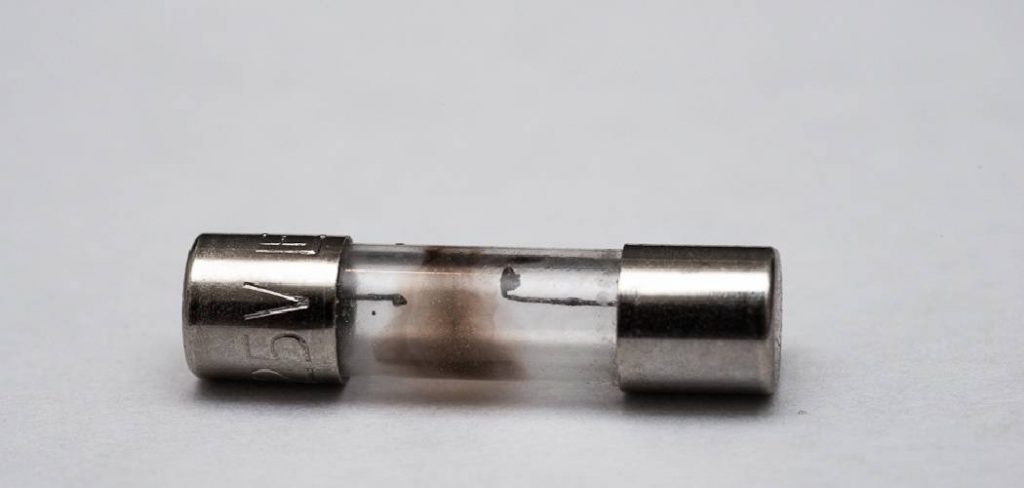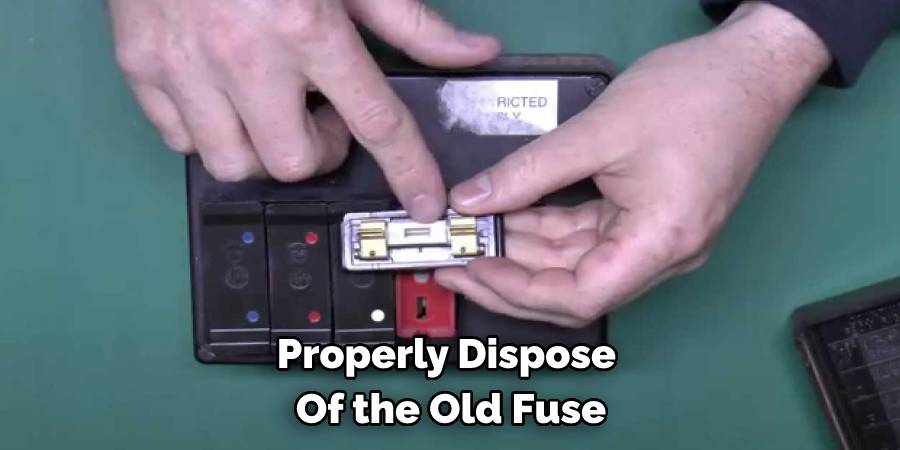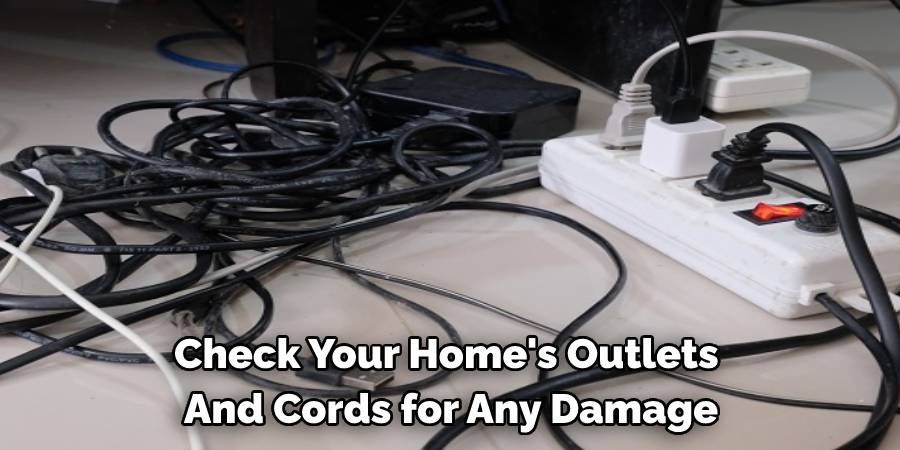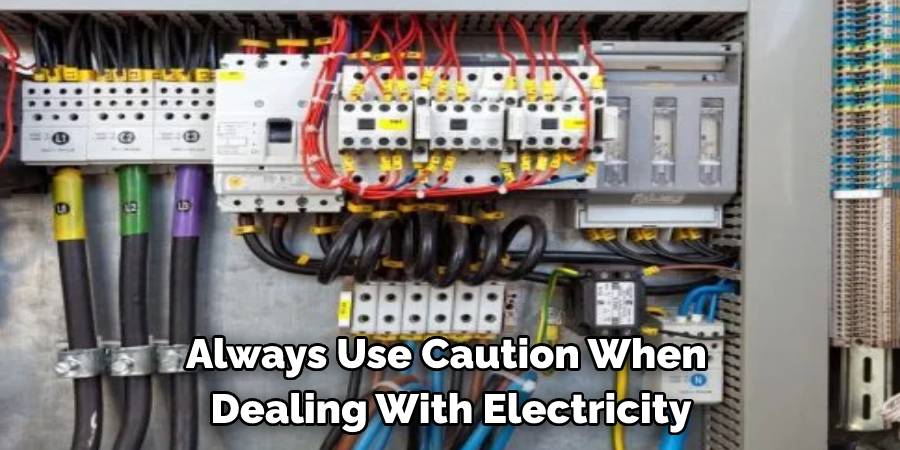Are you experiencing a power outage in your home or office? It could be due to a blown a fuse. Don’t panic. Fixing a blown a fuse is actually pretty straightforward.
There’s nothing like the relief you feel when you flip the switch on a light, and it comes on. The darkness is banished, at least for a little while. But what if the light doesn’t come on? You know there’s a problem when you flip the switch, and nothing happens – no sound, no lights, nothing. The problem might be a broken fuse.
If you’ve ever had to replace a fuse in your home, you know that it’s not the simplest task. In this post, we’ll show you how to fix a broken fuse so that you can get your electricity back up and running in no time. Follow these simple steps, and you’ll be good to go!
Summary: Fixing a blown fuse is not difficult, but it does require a few simple steps. First, use a voltmeter to determine the exact location of the blown fuse. Once you have determined the location, remove the fuse by unscrewing it from the electrical device. Next, use a wire brush to clean the area where the fuse was blown. Finally, replace the blown fuse with a new one and screw it back into place.

What Happens When a Fuse Blows?
Before we dive into how to fix a blown a fuse, let’s first discuss what exactly it means for a fuse to blow. In your home or office, electricity flows through wires and into outlets. The fuse acts as a safety measure – if too much electricity flows through the circuit, the fuse will “blow,” breaking the circuit and stopping the flow of electricity to prevent damage or fire.
When a fuse blows, it must be replaced for the electricity to flow again. How do you know if it’s a blown fuse causing your power outage rather than a problem with the wiring or another issue? Flip on a different light switch – if that light also doesn’t turn on, it’s likely a fuse issue. If only one light isn’t working, there might be an issue with that specific outlet or fixture.
What Will You Need?
Before you begin, there are a few things that you’ll need to gather:
- A replacement fuse of the same amperage (typically written on the blown fuse)
- A screwdriver
- A non-contact voltage tester (optional but recommended for safety)
With these tools in hand, you’re ready to begin replacing the fuse.
10 Steps on How to Fix a Broken Fuse
Step 1: Turn off Power
Before you do anything else, make sure that you turn off the power to the circuit completely. Locate your home’s electrical panel and switch off the breaker corresponding to the blown fuse. It’s always better to be safe than sorry – use a non-contact voltage tester on both sides of the fuse to double check that there is no electricity flowing through it before proceeding.

Step 2: Remove the Old Fuse
Remove the fuse from its holder using your screwdriver by unscrewing the retaining screws. Carefully take out the old fuse, being careful not to touch the metal contacts on either end. It is important because even though the power is off, a small amount of electricity could still be left in the fuse.
Step 3: Insert New Fuse
Take your replacement fuse and insert it into the holder so that the metal contacts on either end touch it. Make sure that it is securely in place before proceeding. If the fuse has a plastic covering, do not remove it.
Step 4: Turn Power Back On
Return to your electrical panel and switch the circuit back on. Test whether or not the new fuse has fixed the problem by flipping on a light switch or plugging in an appliance. If everything works, you’re all set! If not, consider calling a licensed electrician to check for any other potential issues.
Step 5: Dispose of the Old Fuse
Properly dispose of the old fuse. Do not simply throw it in the trash – fuses contain potentially harmful materials and should be disposed of at a designated facility for electronic waste. Make sure to recycle the plastic or cardboard packaging of your new fuse as well.

Step 6: Make a Note
Make a note in your home maintenance log or on the fuse box itself indicating which fuse was replaced and when. This will help you keep track of any future issues and potential problem areas. Be careful not to mix up amperages when replacing a fuse – using the wrong amperage fuse can cause damage to your electrical system.
Step 7: Monitor for Future Blow Outs
Pay attention to any appliances or electronics that frequently blow fuses. This may indicate a larger issue with your electrical system or simply that the specific appliance uses too much power and needs to be adjusted or replaced.
Step 8: Consider Upgrading Your Fuse Box
If you frequently have blown fuses, consider upgrading your fuse box to a circuit breaker panel. Circuit breakers work similarly to fuses but can be reset rather than needing to be replaced each time they trip, making them more efficient and cost-effective in the long run.
Step 9: Practice Electrical Safety
Frequently check your home’s outlets and cords for any damage, fraying, or looseness. Replace any damaged cords, and do not overload outlets with too many plugs. Be cautious when using appliances and electronics, especially in wet conditions. And as always, never touch any electrical equipment or wiring without ensuring the power is off first.

Step 10: Contact a Licensed Electrician
If you are unsure of how to replace a fuse or handle any other electrical issue properly, it’s always best to contact a licensed electrician for assistance. Safety should always be your top priority.
Following these steps on how to fix a broken fuse can help keep your home’s electricity running smoothly and safely. Happy fixing!
5 Additional Tips and Tricks
1. Use a Voltage Tester: Use a voltage tester to ensure that the power is off before you start working on the fuse.
2. Locate the Circuit Breaker Box: The circuit breaker box is where all of the fuses for your house are located. Make sure to turn off the appropriate fuse before working on it.
3. Replace With the Same Amperage Rating: When replacing a blown fuse, make sure to use one with the same amperage rating as the original one. Using a higher or lower amperage can be dangerous and potentially cause more damage.
4. Tighten Loose Connections: Loose electrical connections can lead to overheating and blown fuses, so make sure all wire connections are tight before turning back on the power.
5. Call a Professional: If you are unsure of how to handle the situation or do not feel confident in your abilities, it is always best to call a licensed electrician for assistance. Safety should always be the top priority.
These tips and tricks can help make the process of fixing a broken fuse easier and safer. Always use caution when dealing with electricity, and never attempt any repairs if you do not feel comfortable or confident in your abilities.

5 Things You Should Avoid
1. Do not touch a broken fuse with bare hands: Broken fuses may still have electricity running through them, so use gloves or another tool to remove it.
2. Do not throw out the broken fuse: Fuses contain potentially harmful materials and should be disposed of at a designated facility for electronic waste.
3. Do not mix up amperages when replacing the fuse: Using a different amperage than the original can cause damage to your electrical system.
4. Avoid overloading outlets with too many plugs: Overloaded outlets can lead to blown fuses and potential safety hazards.
5. Do not attempt any repairs if you are unsure or uncomfortable: If you do not feel confident in your abilities, it is always best to call a licensed professional for assistance. Safety should always be the top priority.
Taking Precautions, avoiding these mistakes, and following proper steps can ensure a successful and safe repair of a broken fuse.
Can Broken Fuse Cause a Fire?
Yes, a broken fuse can potentially cause a fire if it is not replaced or repaired properly. Overheating and loose electrical connections can lead to sparks and ignite nearby materials. Always follow proper steps and precautions when fixing a blown fuse to prevent potential fires.
It is also important to frequently check for outlets, cords, and wiring damage to prevent overheating and potential fires. If you are unsure of how to handle the situation, do not hesitate to call a licensed electrician for assistance. Safety should always be the top priority.
Conclusion
Electrical safety is important in the home, and knowing how to fix a broken fuse is crucial. With this guide, you should be able to replace a blown a fuse quickly and easily, keeping your home safe from electrical fires.
While it may seem daunting to replace a fuse, it is a relatively easy job that anyone can do. Just remember to turn off the power to the circuit before beginning, and always err on the side of safety by replacing the fuse with one with a lower amperage rating. With these tips in mind, you should be well on your way to fixing that broken fuse and getting your power back up and running in no time!
Hopefully, this guide has made the process a little less intimidating. Happy fixing! Thanks for reading.
